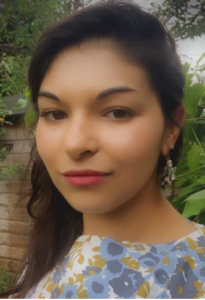World Autism Day
A snapshot into the Life of an ASD (autism spectrum disorder) Specialist Speech and Language Therapist in an Autism diagnostic service.

My day starts the same as many working professionals, I log on early and check my emails and my ‘To do’ list. Depending on the day I might have a multidisciplinary team meeting (MDT). These meetings are particularly useful as within them we structure new business, day-to-day assignments and bring together cases for MDT discussion. Since COVID-19 these meetings can now be held virtually or partially virtually, something that we did not use before but is extremely useful in a team
that spans a wide distance.
As a communication specialist, most of my day is focused around completing Autism Diagnostic Observation Schedule, Second Edition (ADOS-2) and meeting with individuals for assessment.
The ADOS-2 is an activity-based assessment administered by trained clinicians to evaluate communication skills, social interaction, and imaginative use of materials in individuals who are suspected to have Autism Spectrum Disorder (ASD).
The assessment time varies but is typically around 1-2 hours and usually its length is tailored, where possible, to the answers of the individual. The ADOS-2 is typically administered with only the individual and clinician in the room (however, we sometimes have two clinical team members present).
After the assessment is finished the individual will leave the base and the ADOS-2 is then scored. This information is then written up in the report while it is still prevalent in the mind. The clinical team will gather and discuss the appointments and information gained. In some cases, a separate follow-up appointment may be scheduled to go over additional questions.
The ADOS-2 is just one part of a comprehensive evaluation. Other components include an interview with the individual’s parent or a significant other who has known them since childhood; sometimes partners are involved. Although the ADOS-2 is considered the “gold standard” for ASD assessment, it is important to know that it is just one source of information and is not on its own sufficient for making a diagnosis of ASD. The ADOS-2 should always be part of a comprehensive evaluation that considers a person’s developmental history, the information provided by parents and other key informants, behavioural observations both during and outside of the ADOS-2 administration, and the judgement of experienced clinicians.
If I am not doing an ADOS-2 it is likely that I am doing additional questions with a client or getting a diagnostic history from a family member. In our team we use the Autism Diagnostic InterviewRevised (ADI-R), this can be done with family members on the day of the assessment, perhaps if they are carpooling to the base or beforehand by telephone. I prefer telephone assessments as they seem to work well with parents.
This is a short snapshot into what is a very complex and person-centred experience. We aim for the appointments to be a therapeutic process as it is often the first time someone has had the opportunity to tell their whole story and to reframe their life experiences in a way that makes sense. All the members of our team take our roles very seriously and try to provide a positive experience with awareness, that whatever the outcome is, that it is often very meaningful for the individual and can have a large impact upon their emotional wellbeing and self-understanding.
